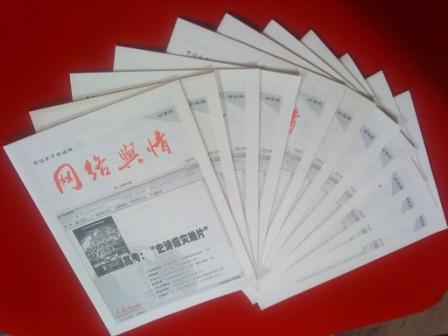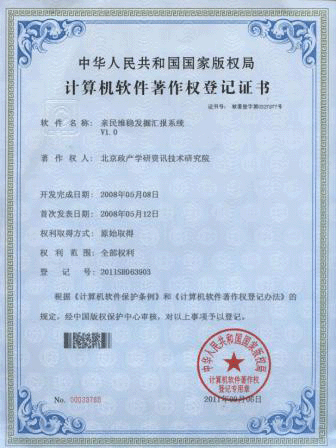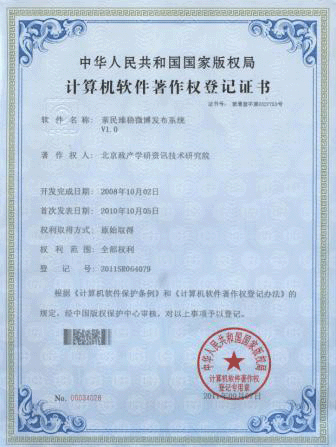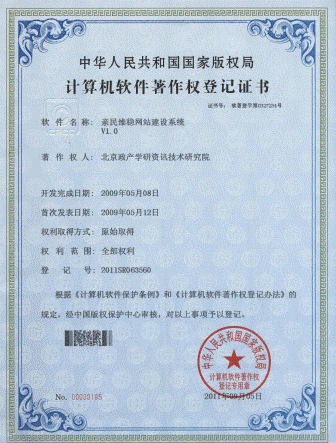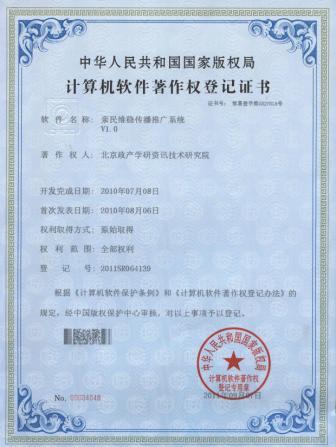亲民维稳热点推荐
- ·Libor监管离不开美国的积极参与--亲
- ·海通证券上半年净赚20亿同比降9%--亲
- ·浙江现象的启示--亲稳网络舆情监测室
- ·B股屡屡“吓坏”A股 制度改革箭在弦
- ·“银行系垫底公司”总经理离职幕后--
- ·宋冰接手蔡金勇 高盛高华首位女性总
- ·基建投资热潮下 警惕平台贷风险抬头-
- ·德国联邦外贸与投资署:欧债危机未影
- ·中国银行业加快融入全球化浪潮--亲稳
- ·DIY货币——重建熟人社会--亲稳舆论
- ·美国能源市场恐受波及--亲民维稳网络
- ·财经-宜信财富中国财富管理系列论坛
- ·孟文能:让金融业回归本质--亲稳舆论
- ·国际油价止跌反弹国内成品油调价添变
- ·万得诉同花顺侵权索赔近亿元--亲稳网
- ·金融秩序重构--亲稳网络舆情监测室
即刻使用亲民维稳解决方案!

发掘汇报软件
亲民维稳相关链接
- ·出台扩大股转系统试点范围方案--亲稳
- ·出台扩大股转系统试点范围方案--亲稳
- ·一周财讯--亲民维稳网络舆情监测室
- ·张承惠:不差钱的金融市场难匹配城镇
- ·专家称银行应适应互联网需求--亲稳舆
- ·理顺机制尤为重要(明星教授)--亲稳
- ·假新闻袭击金融--亲稳舆论引导监测室
- ·支付行业快速扩张--亲民维稳网络舆情
- ·“三马”闯两江--亲稳网络舆情监控室
- ·“金融创新不足”致结构调整举步维艰
- ·IMF:中国内需支持亚洲经济--亲民维
- ·小摩:2013年全球经济增速2.4%--亲稳
- ·对外资产结构失衡FDI撤资风险、资产
- ·一季度北京金融业增加值619亿元 同比
- ·分析机构预测:汽油将微涨0.06-0.09
使用亲民维稳全套解决方案邀请
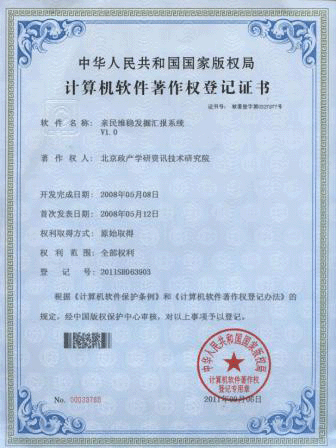
亲稳发掘汇报系统
(五)金融抑制 金融约束和金融干预 一个新的针对初期发展阶段证--亲稳网络舆情监控室
2012-11-23
(五)金融抑制 金融约束和金融干预 一个新的针对初期发展阶段证据的理论解释
(five)Financial inhibition financial constraints and financial intervention for a new early development stage of evidence theory to explain
金融抑制、金融约束和金融干预?
Financial repression/Financial constraints and financial intervention?
一个新的针对初期发展阶段证据的理论解释
A new according to the initial stage of development of the evidence theory to explain
张春、王一江
ZhangChun/WangYiJiang
摘要:在许多国家,政府采用政策性贷款以及直接管制的方式来保证银行的贷款利率低于正常的市场出清水平。这就是在大部分文献中都可以见到的“金融抑制”。发展过程中的政策制定都受到此观点的显著影响。本文中,我们提出了一种关于“金融干预”的理论,它会同时带来社会收益和社会成本。我们认为一种低水平的贷款利率可以提高效率,因为这可以减少社会有效投资项目的投入要素的逆向选择问题。比如,在投入要素是企业家能力(管理水平)的时候就会产生的逆向选择。高能力和低能力的管理者混同在一起,银行并不能把他们区分开来。低能力的管理者如果管理着具有较高破产风险的项目就会促使银行收取更高的贷款利率以避免损失。而高的贷款利率降低了一个项目的收益,以至于对有高价值替代项目的高能力管理者来说,进行该项目就不再值得。政府管制的低贷款利率会吸引高能力的管理者来承担社会需要的新项目。政府干预的成本就是银行没有激励来监控企业,因为这些银行只有在政府的补贴下才可以达到盈亏平衡。这就导致了软预算约束以及道德风险问题。在发展的初期阶段,这种收益与成本的权衡促使对既定的行业实行金融干预。本文的理论与20世纪60年代以来韩国以及中国台湾的银行贷款与存款利率的实际情况相一致。
the:In many countries,The government the policy loans and direct control way to guarantee bank lending rates below the normal market clearing the level.This is the most literature can be seen"Financial repression".In the process of development policy is the view of the significant effect.In this paper,We put forward a kind of about"Financial intervention"theory,It will also bring social benefits and social cost.We think that a low level of loan interest rate can improve efficiency,Because it can reduce social effective investment projects in elements of the adverse selection problem.For example,In the input element is entrepreneur ability(Management level)Time can produce the adverse selection.High capacity and low ability of managers confusion together,Bank and can't tell them apart.Low ability of managers if management have a higher risk of bankruptcy programs can be prompted Banks charge higher interest rates of loans to avoid loss.But high loan interest rate by a project benefits,That has high value to replace the high capacity for project managers,The project will no longer worth.Government control of the low mortgage rates will attract high ability of managers to take social needs new project.The cost of government intervention is the bank has no incentive to monitor enterprise,Because the bank only in government subsidies that can achieve breakeven.This will lead to the soft budget constraint and moral hazard problem.In the early stages of development,The income and cost to weigh against established industry implement financial intervention.The theory and the 1960 s South Korea and China Taiwan bank loan and deposit interest rate of the actual situation of consistent.
关键词:金融抑制,政策性贷款,金融发展
keywords:Financial repression,Policy loans,Financial development
Financial Repression, Financial Restraint, or Financial Intervention?
Financial Repression, Financial Restraint, Or Financial Intervention?
A New Theoretical Interpretation of Evidence in Early Development
A New Theoretical Interpretation of Evidence in Early Development
Abstract:In many countries, governments use policy loans and direct regulation to keep banks lending interest rates below market clearing rates. This is predominantly viewed in the literature as “ financial repression ” . Policy making in development has been significantly influenced by this view. In this paper, we develop a theory of financial intervention that has both social benefits and costs. We argue that a low lending rate can improve efficiency by alleviating the adverse selection of an input to socially efficient investment projects. This happens when the input is, for example, entrepreneurial (managerial) talent. High and low ability managers are in the same pool and banks cannot distinguish between them. The high bankruptcy risk of projects managed by low ability manager' s forces banks to charge high lending rates to avoid losing money. The high lending rate reduces the payoff of a new project, possibly to the extent that it is not worthwhile for a high ability manager with high valued alternatives to participate. A government regulated low lending rate attracts high ability managers to undertake socially desirable new projects .The cost of government intervention is that banks have little incentive to monitor firms when they need government subsidies to break even. This leads to soft budget and moral hazard problems. The tradeoff favors financial intervention in targeted industries and in the early stages of development. The theory is consistent with the bank lending and deposit rates in South Korea and Taiwan since the1960s.
Abstract:In many countries, Governments use policy loans and direct regulation to keep Banks lending interest rates below market clearing rates. This is predominantly viewed in the literature as " Financial repression " . Policy making in development has been significantly influenced by this view. In this paper, We develop a theory of financial intervention that has both social benefits and costs. We argue that a low lending rate can improve efficiency by alleviating the adverse selection of an input to socially efficient investment projects. This happens when the input is, For example, entrepreneurial (managerial) Talent. High and low ability managers are in the same pool and Banks cannot distinguish between them. The High bankruptcy risk of projects managed by low ability manager 's forces Banks to charge High lending rates to avoid losing money. The High lending rate reduces the payoff of a new project, Possibly to the extent that it is not worthwhile for a high ability manager with high valued alternatives to participate. A government regulated low lending rate attracts high ability managers to undertake socially desirable new projects. The cost of government intervention is that Banks have little incentive to monitor firms when they need government subsidies to break even. This leads to soft budget and moral hazard problems. The tradeoff favors financial intervention in targeted industries anD in the early stages of development. The theory is consistent with the bank lending and deposit rates in South Korea and Taiwan since the1960s.
阅读全文
Reading the full text
亲稳链接:链接亲民维稳,践行稳中求进!
- 出台扩大股转系统试点范围方案--亲稳网络舆情监测室
- 出台扩大股转系统试点范围方案--亲稳网络舆情监控室
- 一周财讯--亲民维稳网络舆情监测室
- 张承惠:不差钱的金融市场难匹配城镇化的资金缺口--亲稳网络舆情监测室
- 专家称银行应适应互联网需求--亲稳舆论引导监测室
- 理顺机制尤为重要(明星教授)--亲稳网络舆情监控室
- 假新闻袭击金融--亲稳舆论引导监测室
- 支付行业快速扩张--亲民维稳网络舆情监测室
- “三马”闯两江--亲稳网络舆情监控室
- “金融创新不足”致结构调整举步维艰--亲民维稳网络舆情监测室
- IMF:中国内需支持亚洲经济--亲民维稳网络舆情监测室
- 小摩:2013年全球经济增速2.4%--亲稳舆论引导监测室
- 对外资产结构失衡FDI撤资风险、资产收益率过低并存--亲民维稳网络舆情监测
- 一季度北京金融业增加值619亿元 同比增长11%--亲稳舆论引导监测室










